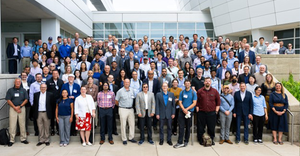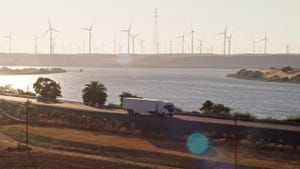EPA & EREF Measure Mercury Emissions
November 1, 2001
Alice Jacobsohn & Ed Repa
Recently, significant concern has arisen about mercury from nontraditional sources and about the harm to human health and the environment that mercury contamination causes. No industry or industrial source has been left out of the loop of federal regulatory examination, including the waste management industry.
A recent study on mercury in landfills was published in Atmospheric Environment, Oxford, England, in Aug. 2001. Scientists with the Oak Ridge National Laboratory, Oak Ridge, Tenn.; Frontier Geosciences, Seattle; Florida Department of Environmental Protection, Tallahassee, Fla.; and the University of Central Florida, Orlando, Fla., examined landfills in Florida to determine whether mercury-containing materials (e.g., batteries, electrical switches, and thermometers) resulted in mercury emissions from the landfills. Of particular interest was methylated mercury, a toxic pollutant.
Researchers assumed that the same anaerobic bacteria that creates methane gas in landfills also could serve as a bioreactor for the production of methylated mercury (organic) compounds. Therefore, two years ago, the research team tested LFG condensate from a Florida landfill and found methyl mercury at concentrations 100 times higher than those found in water. Methyl mercury comes in two forms: mono- and dimethyl mercury, both a nerve poison with the latter being more toxic.
To further probe which forms of mercury may be present in LFG, samples were collected prior to and after a combustion devise at three MSW landfills in Florida. The study found some 50 nanograms of dimethyl mercury per cubic meter of LFG. Researchers found that: 1) the total mercury concentration was 30 to 40 times higher than the mercury concentration in ambient air. 2) Lower concentrations of the less volatile mono-methyl mercury were detected. 3) LFG combustion (>8000C) destroyed mono- and dimethyl mercury, ensuring that only inorganic mercury was released into the air.
Despite the small quantities and study limitations, the authors concluded that landfills were a possible source of anthropogenic dimethyl-mercury because of LFG that is uncollected. This may explain the reports of monomethyl mercury in continental rainfall.
The Florida study contradicts another landfill mercury emission study performed at Fresh Kills, Staten Island, N.Y., where mercury emissions were not detected.
The U.S. EPA Air Pollution Prevention and Control Division, Research Triangle Park, N.C., and the Environmental Research and Education Foundation (EREF), Washington, D.C., initiated a $600,000 research program last spring to sample LFG pre- and post combustion at approximately a dozen sites to determine the inorganic and organic constituents, including mercury.
Under section 112 of the Clean Air Act, EPA is required to promulgate Maximum Achievable Control Technology (MACT) standards for several sources of Hazardous Air Pollutants, including MSW landfills. Also, the Urban Air Toxic Strategy has identified MSW landfills for evaluation in developing a strategy to reduce urban air toxics.
The EPA/EREF study hopes to obtain accurate data on LFG's current emissions characteristics. EPA's existing LFG database was collected in the '80s and early '90s, making it difficult to verify current LFG emissions. Since then, waste composition, landfill design and operating practices have changed at landfills, making existing data outdated.
For example, the Waste Industry Air Coalition (WIAC), an ad hoc committee of the National Solid Wastes Management Association (NSWMA) and Solid Waste Association of North America (SWANA), all Washington, D.C. based, has collected air emission data from landfills and submitted it to EPA because of problems associated with the old data. In the first of two submissions, recent emissions of nonmethane organic compounds data from 144 landfills showed that the average concentration was 457 parts per million per volume (ppmv), while older data reported 595 ppmv. In the second submission, data from 75 landfills regarding the speciated organic emissions showed that older data was 200 to 400 percent greater than the new data from newer landfills.
The EPA/EREF study will include: developing a test and quality assurance plan; identifying sites for conducting measurements and conducting pre-test site surveys; and conducting comprehensive measurements for LFG emissions that are collected and controlled including mercury emissions.
Ed Repa is the environmental programs director for NSWMA and EREF. Alice Jacobsohn is EIA's director of public affairs and industry research. Phone (202) 244-4700. E-mail: [email protected].
You May Also Like


